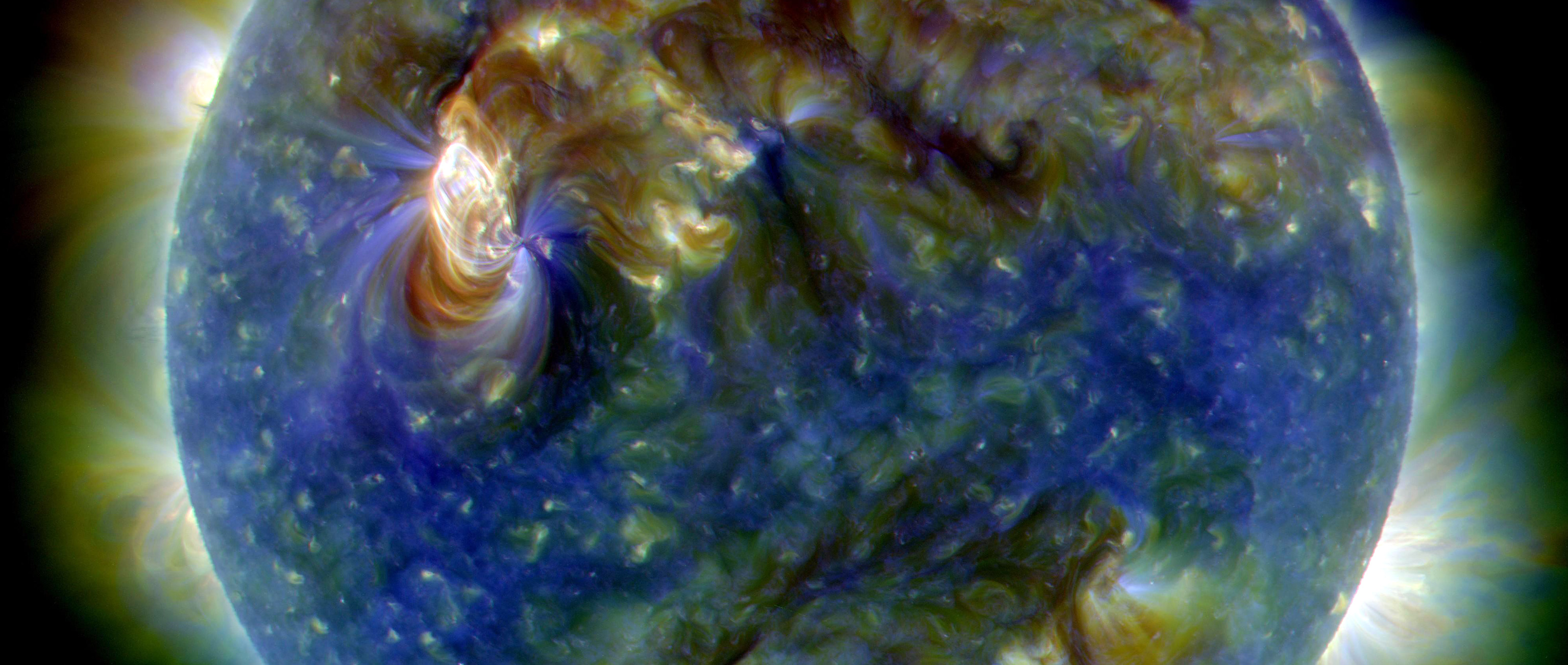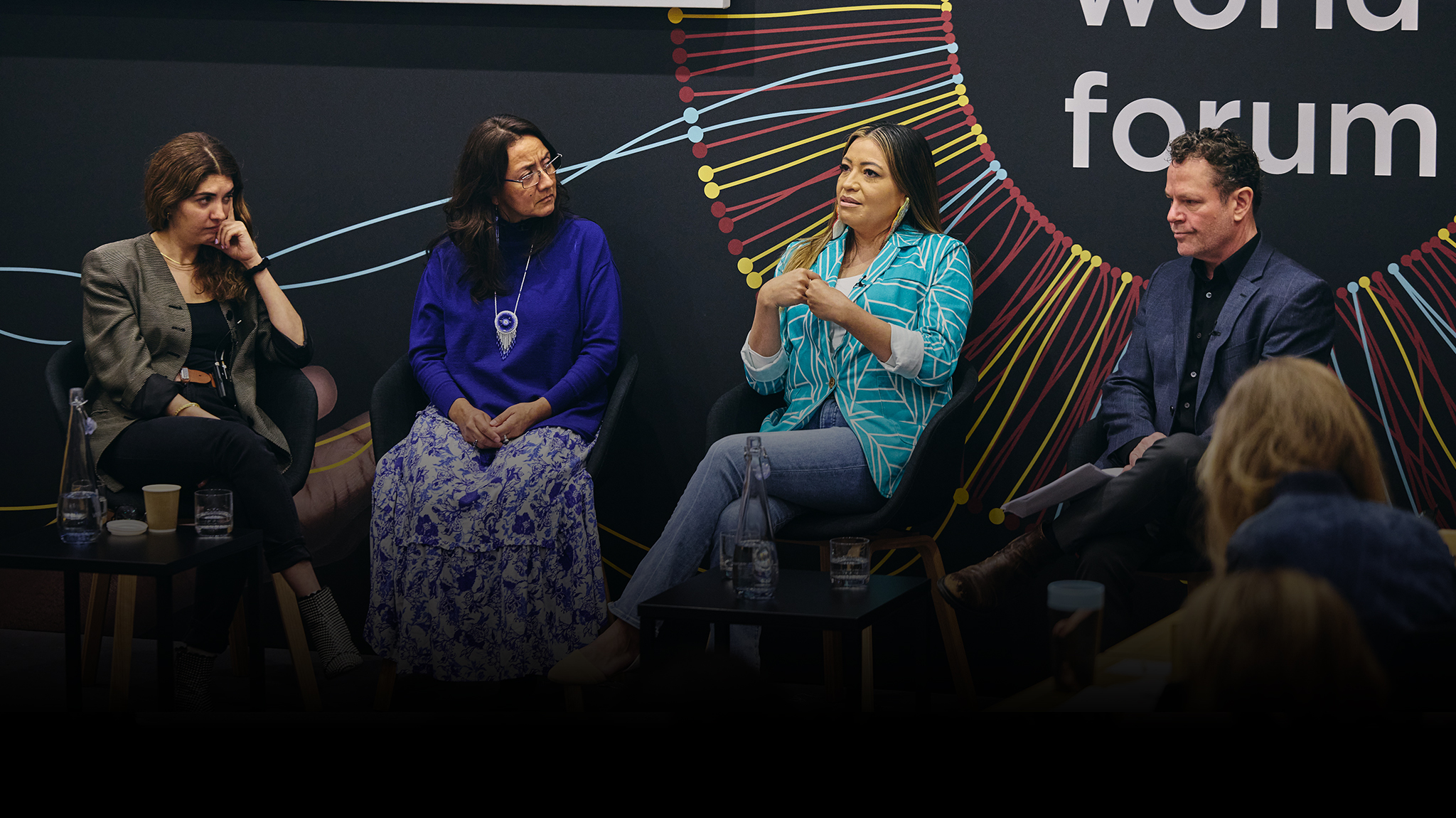Global Commons Alliance: Why This Historic Moment Demands Radical Collaboration
Hundreds of business, government, civil society, and other leaders recently weighed in on the most urgent threats confronting humanity and, for the first time in the Global Risks Report’s history, environmental risks now occupy all five of the top slots. The U.N. is also sounding the alarm. In his pithy opening to the 2019 Global Sustainable Development Report, U.N. Secretary-General António Guterres shared an inconvenient truth. “Our world as we know it and the future we want are at risk,” he wrote. “The window of opportunity is closing fast.” Even a quick glance at recent headlines makes that risk obvious:
- Climate crisis: 11,000 scientists warn of untold suffering (The Guardian)
- The tipping point is here, it is now, top Amazon scientists warn (Mongabay)
- UN panel signals red alert on Blue Planet (BBC)
- We have 10 years to save Earth’s biodiversity as mass extinction caused by humans takes hold, UN warns (CNN)
- Will clean water be our biggest source of conflict in the future? (Quartz)
If not solved, we can expect loss of life, food and water crises, greater migration, exacerbation of geopolitical tensions, labor and supply chain disruption, economic stress, and impacts we can’t even anticipate. These threats may seem distant, or absent from one’s direct experience, but the latest science points to an indisputable reality—we have entered a pivotal decade that demands major global transformation. According to Guterres, the path forward is difficult. “We must connect the dots across all that we do—as individuals, civic groups, corporations, municipalities and Member States of the United Nations,” he wrote. “Science is our great ally in the efforts to achieve the Goals [and] I encourage all actors to translate the insights from [scientific] analysis into collective action.”
Enter the Global Commons Alliance. Hatched in 2017, the Alliance was born out of a shared frustration with systems change interventions which target natural and human systems—climate, land, biodiversity, freshwater, oceans, the global economy, policies and enforcement, mainstream mental models—in silos. From their ‘Whole Earth’ perspective, the initial members recognized that science-established planetary boundaries—such as staying below 2C of warming and aiming for 1.5C—had to be downscaled to the human level and converted into practical targets that could be reasonably achieved by organizations, companies, and institutions. In other words, big aspirations for sustainable development had to be integrated into day-to-day decision-making and operations globally. They also realized that much of the foundation-setting work remained, such as developing targets for Earth systems well beyond the climate.
Envisioning coherent, integrated action, Alliance members conceived of an effort that would 1) spark massive collaboration within the scientific and conservation community, 2) develop science-based targets for all of Earth’s life-support systems, and 3) engage the largest companies and cities capable of taking swift action to meet those targets. Following two years of research, convenings, and proof of concept, this new platform aims to protect the Global Commons—our shared land, seas, atmosphere, and biodiversity that are critical to supporting life on Earth. Key pieces of the platform include:
- Earth Commission: Billed as a “compass for humanity,” the Earth Commission convenes leading scientists and experts who will synthesize the latest science to identify thresholds for the stability and resilience of the “Global Commons’—our shared land, seas, atmosphere, and biodiversity that are critical to supporting life on Earth. The Commission then delivers this data to the Alliance. “It’s not just about understanding how far we can push different environmental systems, but how those systems all interact with each other to define a safe operating space for the entire planet,” says Apurva Dave, Director of the Earth Commission secretariat. “Human communities and the natural environment feed back into each other, and so we have to maintain a people-planet perspective across different scales of space and time. Moreover, there is a strong human social, cultural, human geographic context to setting science-based targets, and so our analysis will have to integrate the social science knowledge base around societal transformations, consider traditional and indigenous knowledge systems, and incorporate principles of equity and co-production.”
- Science Based Targets Network: An international NGO collaboration, the Network will convert the Earth Commission’s thresholds into practical pathways for companies and cities—such as specifying how much and how quickly they have to reduce their greenhouse gas emissions—and equip them with tools to get started. Companies and cities are crucial because, unlike deadlocked political institutions, they are free agents who can quickly choose to adopt sustainable practices—a “coalition of the willing.” Fortunately, there are many such actors. The Alliance builds on the momentum of the Science Based Targets Initiative, which has already enlisted 750+ companies who are taking action to reduce emissions, such as Coca-Cola, Dell, Kellogg’s Pfizer, P&G, Sony, Tesco, and Thalys. The Network also aims to reach cities representing 50 percent of the global urban population—a critical mass that could catalyze tipping points—by 2025. “You need to bring together a big enough coalition and movement to drive the change you’re looking for but, in doing so, not lose the speed and urgency of action,” says Erin Billman, Executive Director of the Science Based Targets Network. “Designing for both is somewhat uncharted territory.”
- Earth HQ: This “media portal for the planet” will be a one-stop-shop for the latest on what’s happening to Earth’s natural systems and on promising solutions—to help shift narratives among tens of millions of people, generate public demand for action by corporations and cities, and mobilize local leaders. A newsfeed similar to AFP or Reuters, the Earth News Network will enlist leading journalists and documentarians to cover urgent events and deliver compelling stories to an alliance of media partners. An Earth Dashboard will allow the public to visualize and interact with the Earth Commission’s data and insights. Visual storytelling and social media amplification will be key to reaching a lot of people quickly, says Tim Kelly, Executive Director of Earth HQ. “Earth HQ is going to provide transparency around what corporations and cities are doing, and who is taking the lead in making changes.”
- Systems Change Lab: The development of new science-based targets provides guideposts to help committed companies, cities and countries to take proper actions. But SBTs alone will not guarantee that individual companies will be able to take meaningful actions. The right enabling environment, including relevant policy measures and regulations, are required, including introducing proper incentives and allowing for a critical mass of companies to move together. The Systems Change Lab will complement the work of the SBTN and the GCA as a whole by identifying, supporting, and promoting this way of thinking. Committed companies and cities, in turn, will become better equipped with a new portfolio of SBTs that can guide actions on the ground. The Lab ultimately aims to promote transformational change to key economic systems, which will allow for committed companies to meet the targets that they set through the GCA. With the Global Environmental Facility and the World Economic Forum leading, the Lab will distill lessons from the Alliance’s and others’ systems change efforts.
- Investors Collaborative: A collective of core Alliance donors, the Collaborative current includes such funders as Good Energies Foundation, IKEA Foundation, MAVA Foundation, Moore Foundation, Oak Foundation, and Porticus. The Alliance’s fiscal sponsor and consultant, Rockefeller Philanthropy Advisors, will help donors adjust their requirements and expectations to accommodate the unique nature of the Alliance’s efforts—such as by funding over the long-term, reducing reporting burden, and looking beyond short-term outcomes. RPA will also guide Alliance members toward complexity- and systems-aware monitoring, evaluation, and learning approaches, like the recently launched Blue Marble Evaluation.
It will take some time to scale up this global effort and contribute to transforming food systems, greening our cities, decarbonizing the global energy system, and moving towards a circular economy. Though 25 top science and conservation institutions—such as Ceres (Skoll Awardee), The Nature Conservancy, Stockholm Resilience Centre, UN Global Compact, World Resources Institute, and the World Wildlife Fund—already contribute to the Alliance, much of the hard work remains.
The Alliance has begun to reach out to companies with opportunities to engage, and the first set of workshops to prototype guidance and tools for cities just kicked off. By 2021, the Alliance aims to engage 200 cities and at least 1,000 companies, and to complete a high-level synthesis of scientific knowledge on each of the key natural systems. By 2022, the Alliance aims to develop target-setting methods for those systems, and to start testing. By 2025, the Alliance hopes that this will be standard practice among leading companies and cities.
This path is riddled with challenges though. Global inaction over decades has left us with the ultimate tragedy of the commons, and very little time to avert it. The science that makes the tragedy known is often politicized or outright ignored. The resources needed to scale solutions at the ‘size of the problem’ are sorely lacking. The Alliance is thinking and acting big despite “jaw-droppingly” small amounts of support relative to other philanthropic sectors, particularly given that the health of the commons fundamentally underpins our society, says Erin Billman. The Alliance must also navigate different geographic and political contexts, governance challenges, equity and justice considerations, diverse perspectives, and other hurdles on the way toward transforming how we eat, move, produce, and consume.
Yet, the Alliance is shaping up to be a powerful lever for change within the global economy, in part because of one of its guiding principles—pragmatism. When asked in an AFP interview whether a viable solution to global warming is compatible with consumer capitalism, Johan Rockström (Director of the Potsdam Institute for Climate Impact Research, an Alliance member) replied: “We don’t have a choice. On climate, the time is running out so fast that there’s no other pathway. Either we make this work within the existing economic paradigm, or we fail.”
According to Tim Kelly, the next few years—well within the lifetimes of his children and grandchildren—will determine the next thousand and beyond. “If it’s not a big coalition like this, then what is it going to be?” said Kelly. “It’s a privilege to take part in this kind of an effort, with this stellar group of organizations, and we’re starting to see traction. It’s an incredibly exciting moment, the perfect opportunity to have something snowball and become the new social norm.”
The scale of both the challenge and the opportunity is cinematic, says Apurva Dave. We are part of an epic story in which a community of scientists and change agents come together to tackle the greatest challenge facing humanity. “This is the biggest thing that I can think of,” said Dave. “It’s about the fate of the world that we’ve created together yet can’t fully understand or control. We’re in the middle of this incredible drama, contributing to a historic moment.”
Want more stories of large-scale change on the world’s most pressing problems? Sign up for Skoll Foundation’s monthly newsletter.
By NASA/SDO/AIA – NASA Image of the Day, Public Domain, Link



